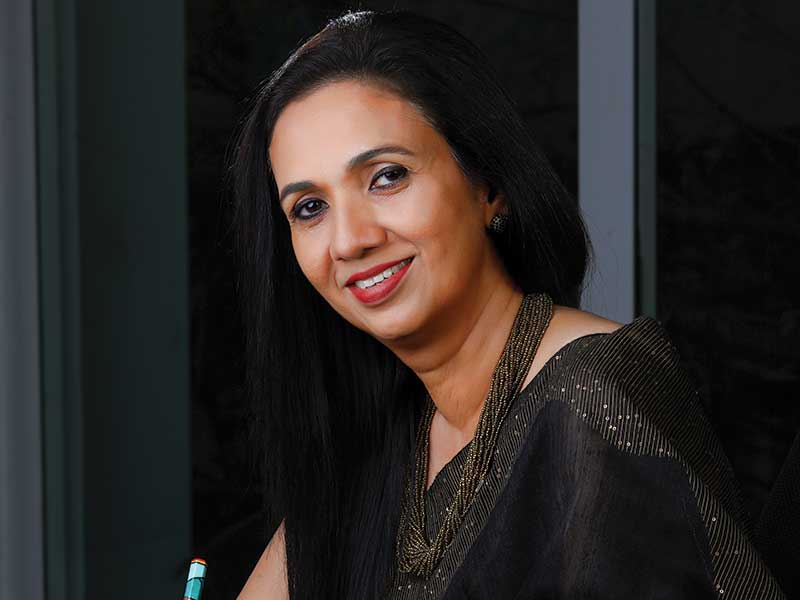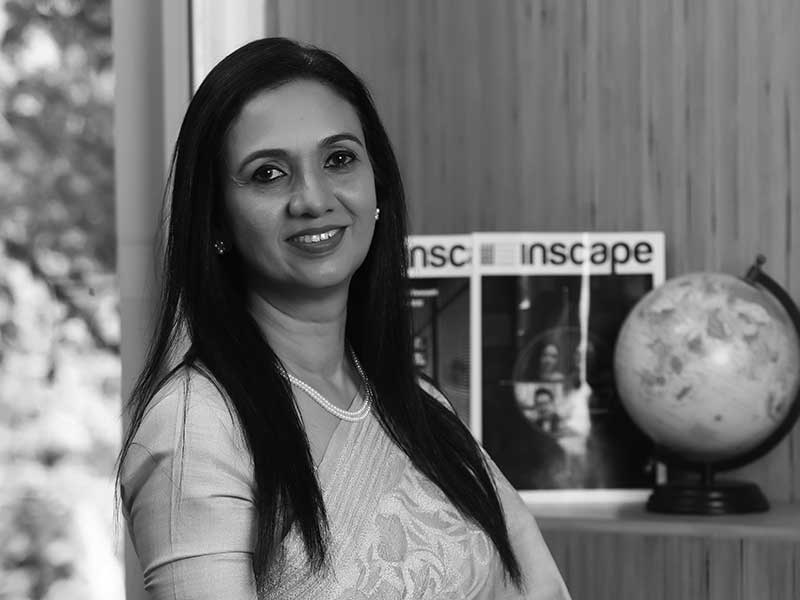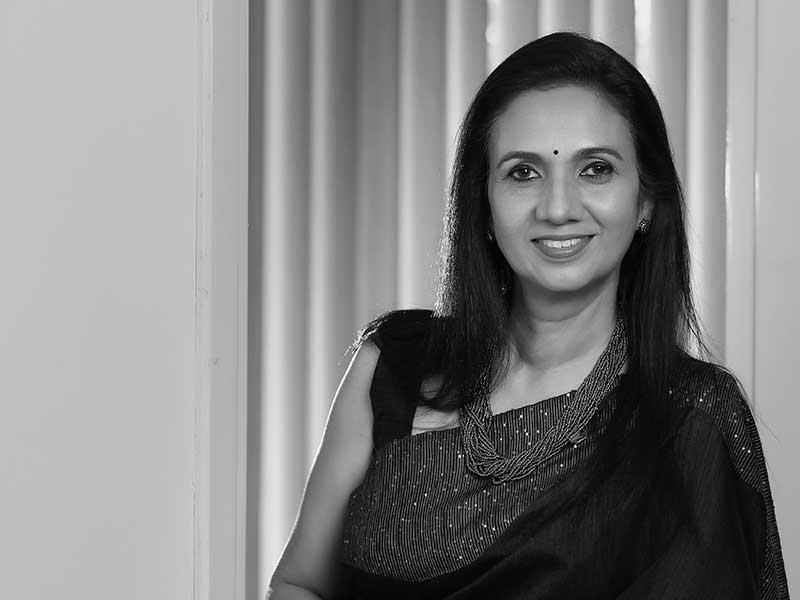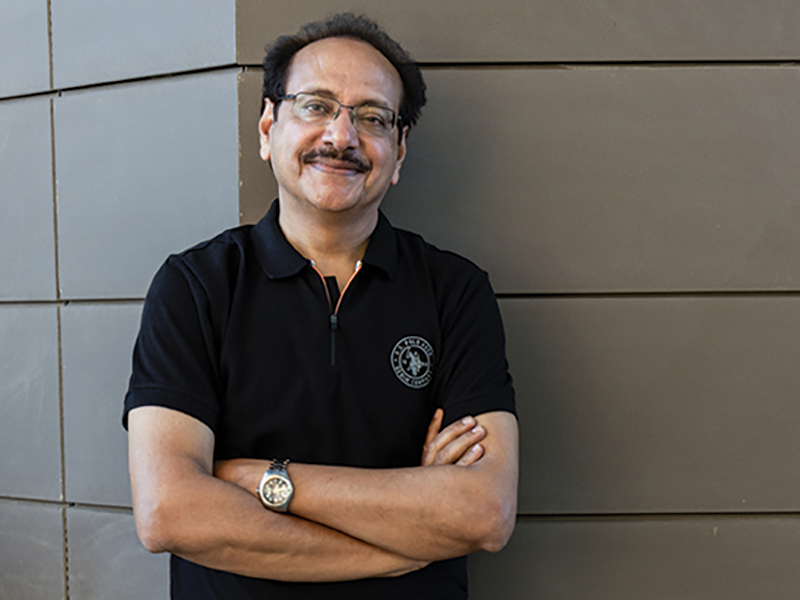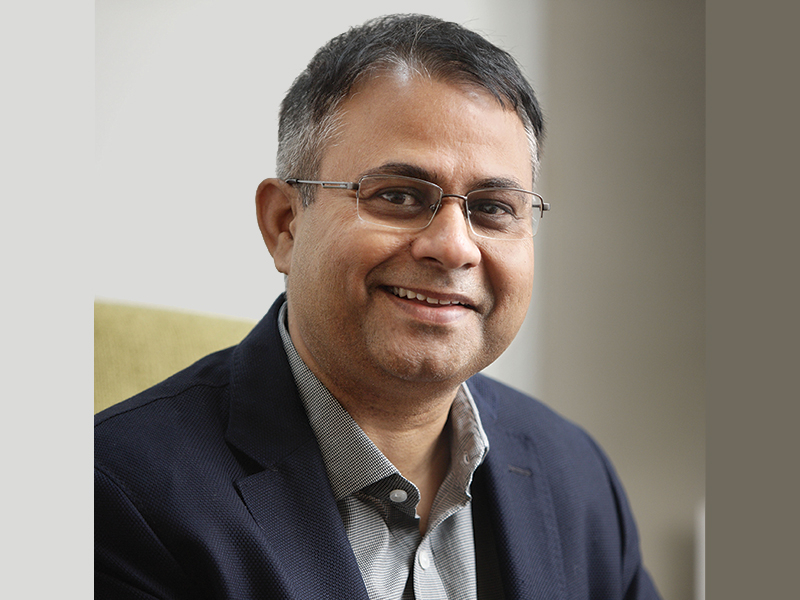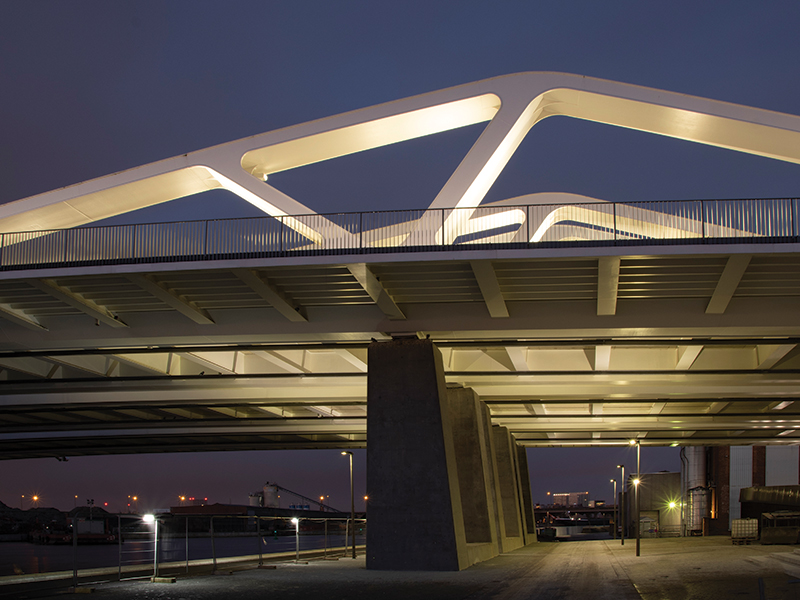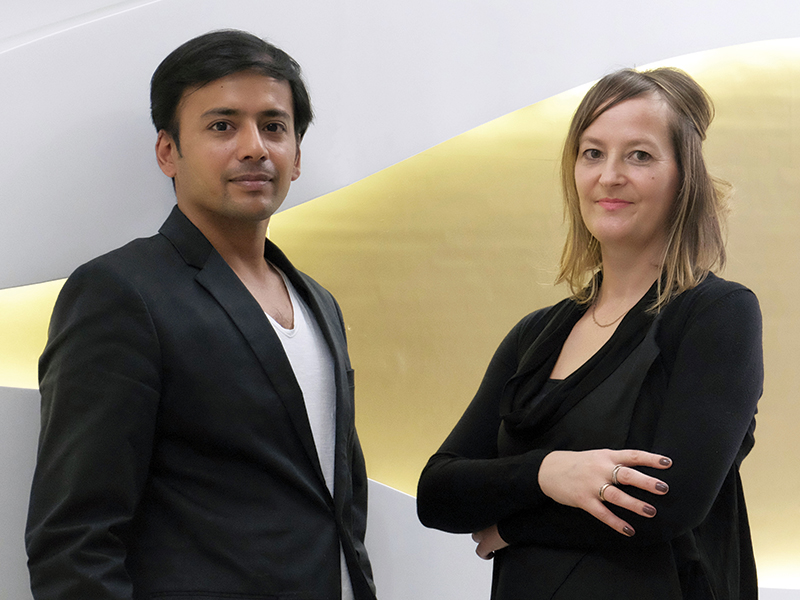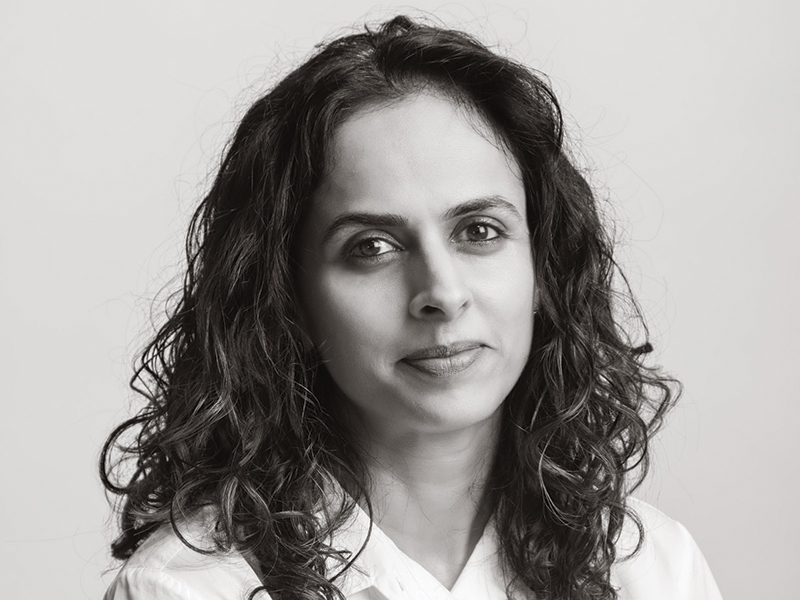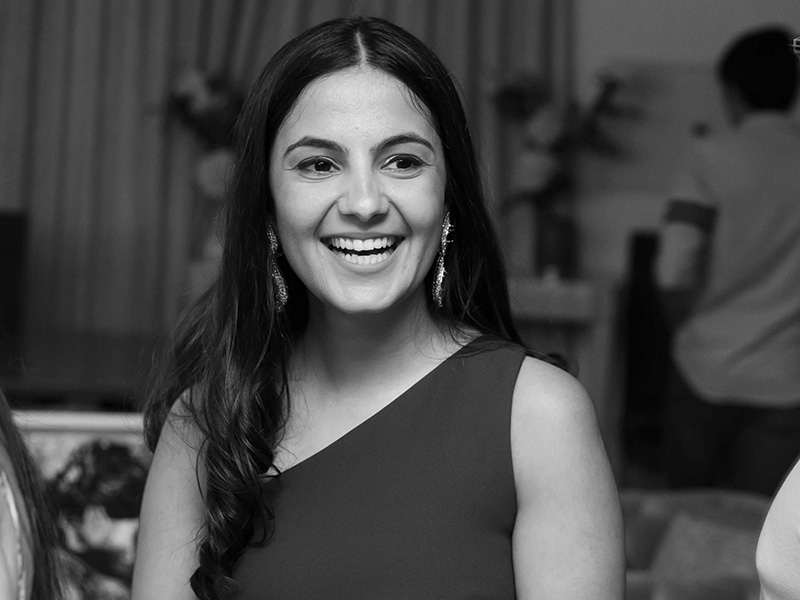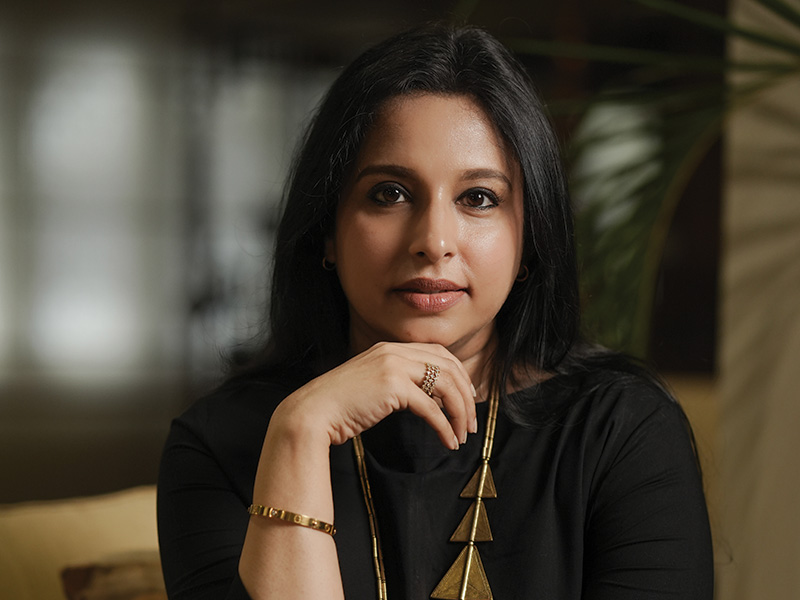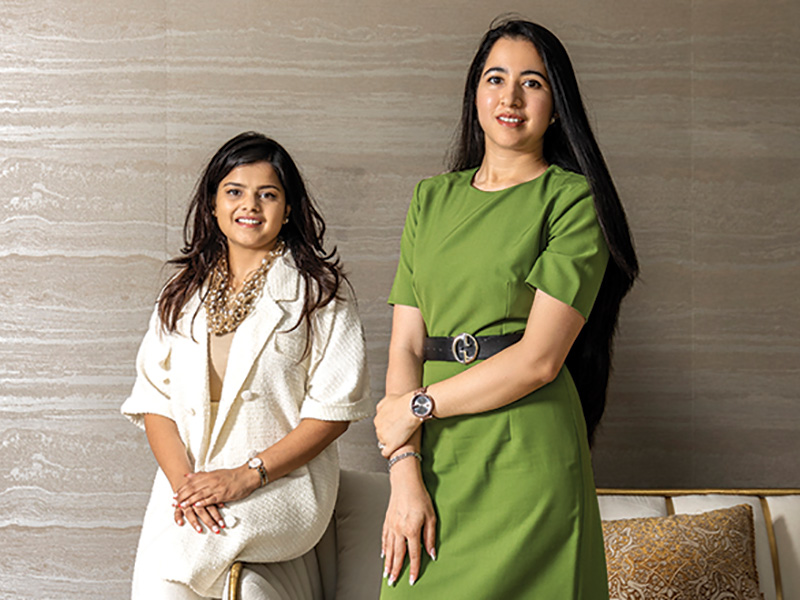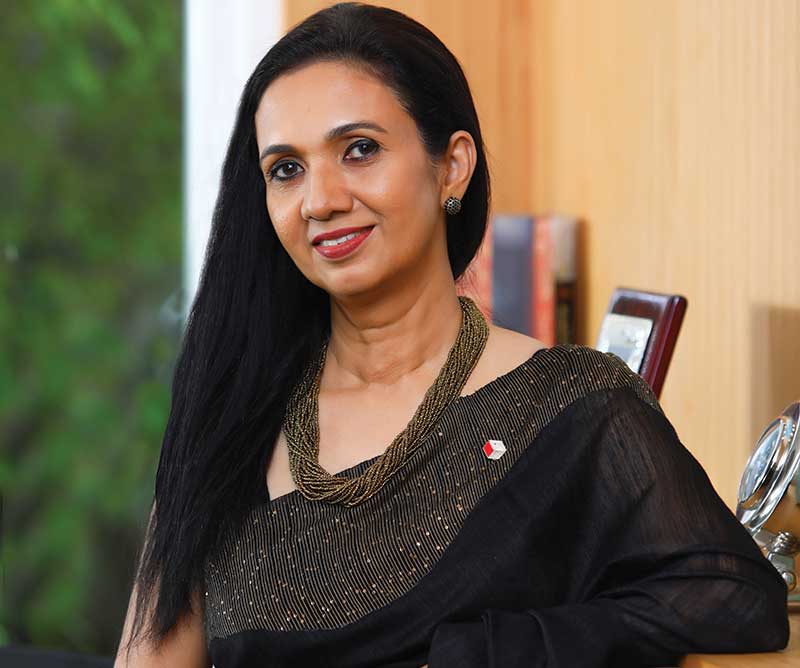
As Chief Architect of Jabeen Zacharias Architects, she has steered the firm to award winning practices with over 300 projects ranging from 5-star hotels, malls, apartments, offices and luxury residences in India, USA and Middle East. The firm has offices in Cochin, Bangalore, USA and Dubai with two separate wings: The Inside for interior design projects and Studio J for architectural projects. Her clientele includes World Bank, Le Meridien, Taj, KTDC, Samsung, HDFC and ICICI, among others.
Today, Jabeen is a well-recognized face in the architecture community of India both for her practice and her social involvement. She has received many awards and recognitions for her design excellence and leadership. She also serves as a juror in numerous architecture and design award programs and lectures at various institutes in Kerala and is a much sought-after speaker at events and at panel discussions.
She is passionate about teaching, theatre, music, dance and drama; which she says give her a unique insight and creative edge when approaching design in a holistic manner. However, it is interior design that drives her as it allows her to dream and visualize beautiful spaces. She dedicates time both to her practice and to organizations like IIID and is keen to take design to the masses.
Architect by Accident - Interior Designer by Choice
Ar. Jabeen believes that it was Providence that led her to the field of architecture and interior design as she was more interested in studying electronics engineering. Her first job as an architect was with Cyriac Vellappally & Associates, one of Kerala’s oldest and best-known architecture practices. Later, she was appointed as Assistant Architect at the Greater Cochin Development Authority. And the next three years saw her teaching at her alma mater. In a freewheeling interview with MGS on the side lines of IIID’s celebration of Vision2020 Summit at Kochi, Jabeen shares her deep passion for design, education and learning. Excerpts from the discussion also reveal her strong belief in the intrinsic simplicity and honesty in architecture – in creating buildings and homes that bring relaxation and contentment. Design for her is magical and is not meant only for the elite to enjoy, but also for the common people.
I believe that it is important to incorporate design into the cultural context of a region
I started as a junior architect with Cyriac Vellappally &Associates, a firm based in Kottayam – 75 km from Kochi and also my hometown. As a very well-established firm, it was dealing largely with affluent villas. This was my first encounter with the elite class. Architect Cyriac brought in the concept of using concrete and a new approach to the existing design vocabulary of our traditional architecture. And he created beautiful villas, as a result of his initiatives.
In Kerala, as in many parts of India when glass, steel and reinforced steel came into play in the year 1985, architects and developers were very excited to experiment with the new materials as opposed to the traditional use of wood etc. But the architecture of the land that had evolved and had reached a certain level of maturity did not get enough time to digest the changing phase of architecture and to incorporate it as a comprehensive architectural style. It is very important to incorporate design into the cultural context of a region.
Cyriac’s buildings, for example, were a juxtapose of culture and modernity and exuded relevance which were considered very contemporary in those times (1985).
 The Leela Kovalam
The Leela KovalamI set up the IIA Cochin center in a record 90 days
I studied architecture but even then, I had a strong affinity towards interior design. While my husband has the upper hand in architecture, I liked to visualize spaces and move around them. In fact, interior design was my passion. When I met the president of IIA he suggested that I should consider starting a center in Cochin. I set it up in a record 90 days! I was the Honorary Secretary and the best IIA center award was taken by Cochin in the same year.
IIA and IIID are two very strong associations. Today, I am extremely passionate about the Associations, even more than my practice. It’s a paradox that while I love solitude and do not like to be in the public glare, I am a natural people’s person when it comes to forums where I enjoy meeting people, contrary to my basically reserved nature.
Design can nurture life or destroy it completely
I got the opportunity to practice with Cochin Development Authority as an assistant architect. This assignment was in complete contrast with my experience with Cyriac. From affluent villas, I was exposed to housing schemes for the high, mid-low and the economic weaker section. It brought me in close connect with real life and the need for housing of different strata of people. The lower section would have more occupants than a high-income dweller, so their need would be more. The challenge was to give them a decent environment while catering to their living requirements with a good and practical design.
I was exposed to different sects of people and to the real dynamics of design. This insight can only come from practical experience. I realized that design can destroy life or it can really nurture life. And designs is not only meant for the elite, but for the masses too who need good design as a basic solution to their needs.
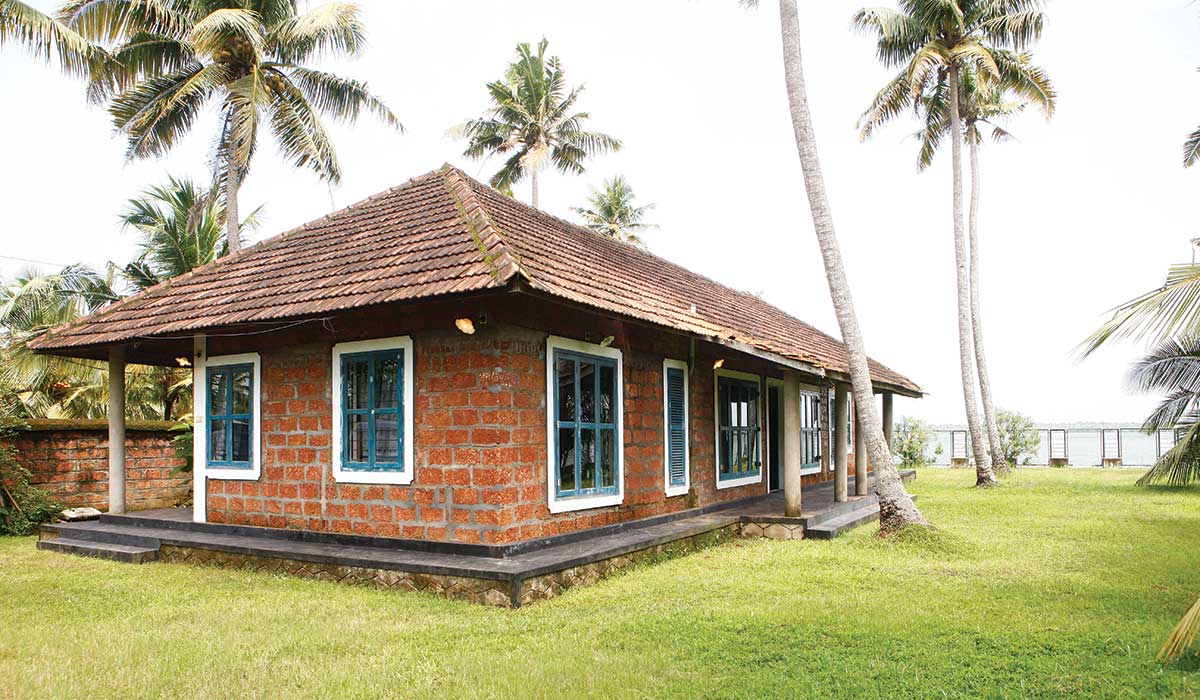 The Kadavu
The KadavuA home is an idea that one finds satisfying
I don’t think a good design is possible only within a good budget. A small hut can be a better home than a luxury villa. An unplastered house with the bare necessities (as in a chalet or a resort) attracts you because it appeals to your basic nature. It exposes your inner self and the masks can come off.
Each and every element that we add has a direct say on how the space will be used and how it will be enjoyed. Costing comes into play also. For example, we would like to place the toilet at the back but this would mean having to extend the pipe by 3-4 meters more. This amount when multiplied by 500 units is a huge amount in a project for the economically weak.
So, every extra centimeter entails a cost that must be accounted for. Just by placing a door in a different way, maybe we can accommodate an additional bed or one more table. Coir, for example, can be used for partitions; It will be almost 50 percent cheaper than materials like brick and laterite. It can be used for walls, roofing, flooring, furniture, etc. In fact, we have urged the Government of Kerala to lend support for research into coir composites for construction and to encourage innovation and development of coir products.
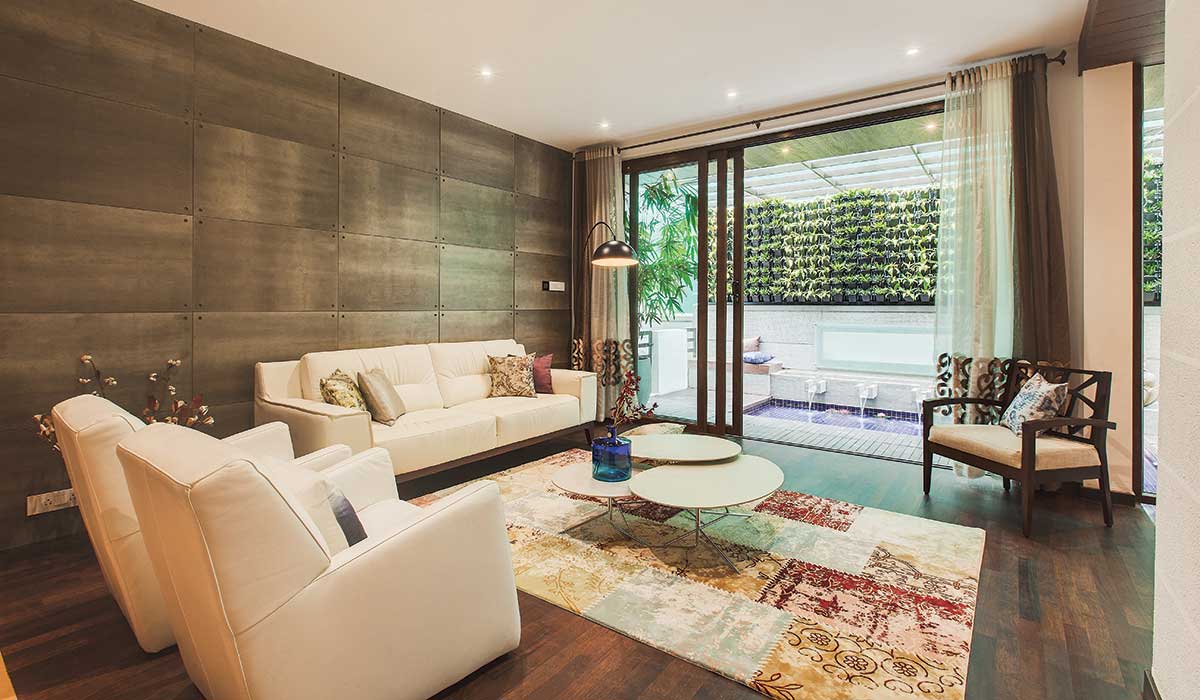 Tendulkar Villa
Tendulkar VillaI have enjoyed teaching and nurturing young talent
My husband Lalichan Zacharias and I were classmates and after we got married we had plans to set up an architecture firm together so that we could be competitively at our best. But it didn’t happen that way! He started his own firm, and as I was holding a first rank under the PSC selection as a professor in Architecture at an engineering college, my entire family of bureaucrats were very keen that I take up the gazette post. So, I became a Professor in the department of architecture at the College of Engineering, Trivandrum, where i taught for 3-4 years.
People are not thinking out of the box when it comes to education
I believe that the way architecture and design is being taught in colleges today may not be the ideal way at all. People are not thinking out of the box when it comes to education. We learn history of architecture during our first and second years. We learn and draw from history textbooks, but we go for tours to see the architecture only in our final year, and are surprised by what we see in realty. Why don’t we start with a tour of the land and people in the first years of college for a better and a more realistic understanding of the context before we begin?
As a student of architecture for 5 years, I have not placed a single brick; nor constructed a one-meter high wall. We have labs, we learn carpentry, but are not involved in actual construction of a space or a room. Understanding and actually following the processes involved can come only with practical experience and exposure.
IIID has collaborations with 55 to 60 colleges. It has its own syllabus and we encourage colleges to go for nothing less than3 or 4 years of curriculum as we believe that these many years are necessary for students to get good insights on the subject matter. We also help the colleges with their existing syllabus and suggest changes where necessary. We also impart training to the faculty for interior design teaching and also help in setting up new colleges. So, we do a lot of handholding.
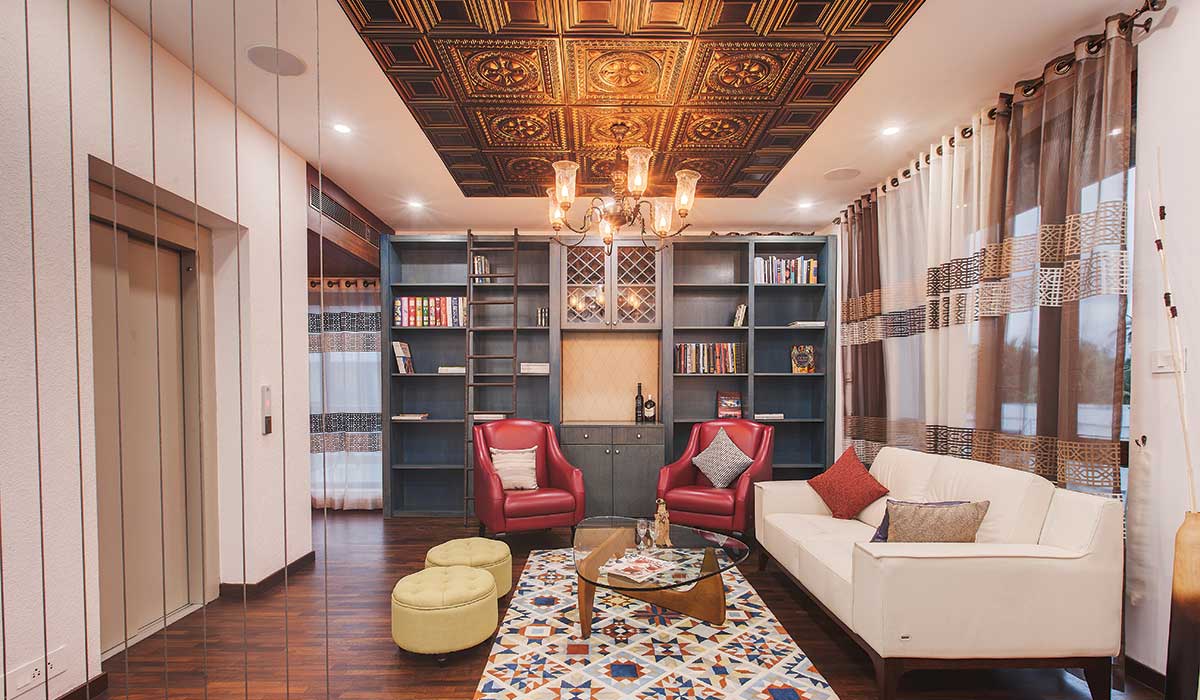 Tendulkar Villa
Tendulkar VillaI am very radical in my thinking
My idea of a curriculum would start with a tour of the land with students sketching, meeting the locals, sharing thoughts and ideas. You cannot go wrong when you translate the intangible into the tangible. We are working under a conventional set-up. Our greatest architects like Le Corbusier, BV Doshi and others who worked at the ground level; they travelled, visited villages, sketched buildings and imbibed the spirit of good design that showed up in their work.
Today, we are in the age of automated learning methods with computers and technology, and are becoming more and more stereotyped – much like making an assembly of designs without really delving into life or having any deep insights into the living experience.
Why complicate design?
Interior designing has different realms - from simple to complex. Today, we have to think of very complex spaces. For example, designing buildings for senior citizens who have become increasingly active now. A small design mistake can lead them to a fall and make them bedridden. So deep research must go into the materials and into the design to make the spaces friendly. For example, every material has a temperature: warm and cold. Materials can be fire retardant, or they may spread fire. High ceilings can make a person feel lost. So in-depth knowledge comes in handy.
We are now trying to influence the government to regulate interior design practices and bring in a professional license for interior designers. A client will also know that they can trust a licensed practitioner, who will know the necessary rules and regulations.
People want to do good when they come together
IIID has 32 chapters across the country. It offers a platform for designers to come together and discuss how and what the practice can do for them and to solve issues and take the profession ahead. Issues can pertain to the low stipend given to interns, and help designers who are not getting enough assignments, and how to spread awareness, clients do not understand the intricacies and complexities involved in interior design and are unwilling to pay the price for it. Such issues are affecting the profession and are of common interest and concern to all. The forum gives them the opportunity to share knowledge and experiences and become more socially connected.
Our greatest architects like Le Corbusier and BV Doshi trained themselves at the ground level; they visited villages, sketched buildings, places and people and imbibed the spirit of the region, which showed up in their work
Society, architecture and design go hand in hand
The outlook of the society towards housing types, be they farmhouses or affordable housing, or sizes of buildings, are trends that are also shaping and influencing architecture and design, and vice versa. Forums give us the opportunity to correct us or to reorient us in different ways and directions, and this when debated across the country in IIID’s 32 chapters and centers, then naturally, a collective policy is formed.
We are in touch with corporations and councils and we help them with their projects also. We get aligned with government authorities and help them with beautification of the city, tree-scaping etc. So, the collective vision is taken forward at a national level. Bodies like IIID bring professionals on one platform to discuss and solve issues and challenges confronting all sectors.
Architects and designers are working towards a common good design. No doubt, architects have more credibility and more visibility so to say, while interior designers are getting prominence only now. The concept of interior design is picking up as the client is no longer satisfied with a shell; he wants to complete it with interior design to get a wholesome experience.
While architecture has led the way by filling people’s basic need for a shelter, interior design has been a little late in coming into play. However, architecture and interior design must happen hand in hand so that they can mature into a comprehensive space and show the way ahead. Though I am an architect, my passion is interior design as it helps me dream and visualize beautiful spaces. However, there is no denying that it was my knowledge of architecture that has added weight to my prowess as an interior designer – a job that requires time and attention for visualizing, conceptualizing, and for detailing.
We want to bring crafts into design
While IIID’s flagship Design Yatra will be an ongoing activity, we are also planning a Design Yagna across all IIID chapters. For instance, our vision for 2020 will be fanned across all the chapters to keep the fire of knowledge perpetually burning. We will have a series of knowledge sharing. During the yagna, 32 speakers from 32 chapters will talk on 30 different topics at our 32 chapters. So, when we document all this, we will get a lot of insights where design stands today and the way ahead.
We want to bring crafts into design where the 3H – Head, Hand and Heart will be involved in the creation
We are also talking to the government to have an Indian institute for craft. We want designers and the craftsmen to learn and work together as their joint creativity will give Indian design an edge over other countries. We also need to empower workers in the unorganized sector and bring design standards up, because 70% of the design is happening through housewives, masons, weavers, etc. We are also collaborating with companies on carpentry, plumbing etc. Craft should be used for the sake of craft. It should be curated and integrated into the design of a space as an integral part of the design conceptualization right from the beginning.
It is unfortunate that we are using the computer even for the creative part.
We need to keep alive the emotions that go into design Designers are now simply playing with their computers to design projects. It is prophesized that by 2050 design will come to an end because computers will take over. This is because the world is becoming a very commercial place. In fact, there is an inner designer in every person and software is making it possible even for the layperson to design a space that suits her/him.
Robots, AI and technology is going into every field of work but there is some hope for designing as it involves creativity. But with software hastening the process, how much creativity will we be able to bring into our spaces? Creativity happens only if we have the time and the inclination to come up with fresh ideas and visualize with our inner eye. I believe in being personally involved in very project that comes my way, so I don’t take on too many at the same time. But most firms cannot survive if they do not have many projects; so, they compromise.
It is a good thing that most colleges do not allow students to use the computer for the first two years. When they use hand and head on paper, a lot of coordinated and passionate slow thinking happens. Designers are great storytellers. not robots, and we need to keep alive the emotions that go into a design
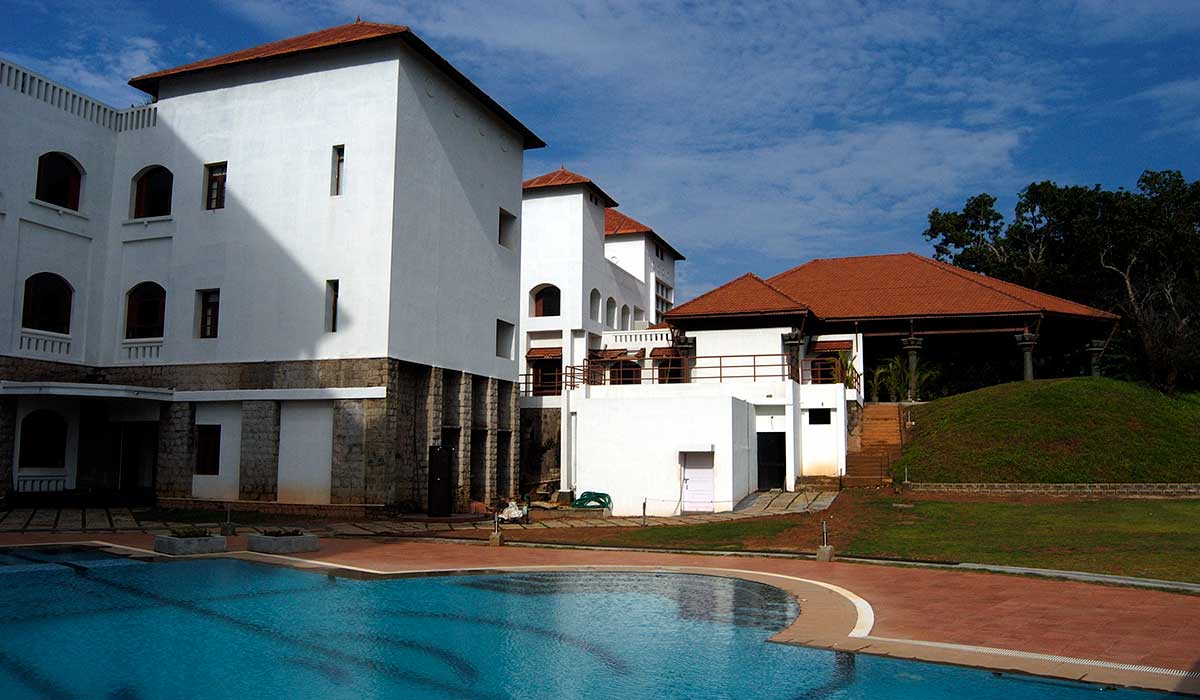 Mascot Hotel
Mascot HotelGlobally, a lot of necessity driven design is happening
The global population is nearing 8 billion now and we have to look at standardization and mass designing over individual touches of creativity – but with an angle. Solutions to reduce water and energy consumption, usage of the fast depleting natural resources, etc are being pursued This is the general approach being taken by most countries who are also doing a lot of research to come up with alternatives.
Standardizing design using brick, glass and concrete is an easy way to design without taking the land of the context into consideration. I believe that architects can influence clients to look at good design and not just the completion timeline or the budget of a project.
Developers should know that a property is built for generations and the impact it has on the city. So, they must make a very conscientious decision, as must the architect. After all, creativity must be given its due! I believe that a little bit of ego is necessary for every architect and designer!
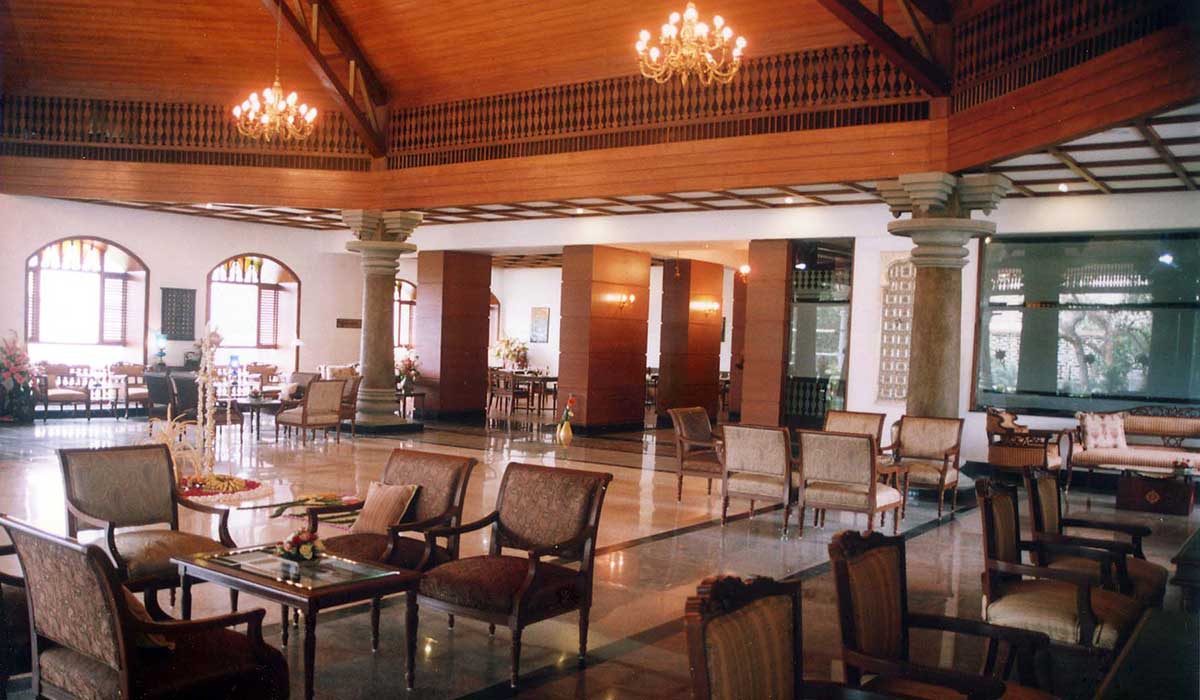 Mascot Hotel
Mascot HotelBuildings should merge into the environs
Precast buildings have a huge scope for design as the design elements are ready to use and may be used again and again. Each and every inch every joint will have to be designed carefully. The responsibility behind the design is multifold, so the designer and the architect must put their heart into their work. Rather than creating buildings that stand out due to their design, I believe buildings should merge into the surrounding buildings or the environs. We should design within the context of the region to carry forward the legacy of the place and not design to simply impress. I believe that it’s good to belong rather than choosing to stand out for the sake of being ‘different’. A policy to sustain and maintain the region’s identity is also needed.
Keep design simple
As regards individual creativity, there are two trends: extreme egoistic expressions like a bubble of happiness that is all superficial. At the other side there is an aware group of people trying to come up with new responsible concepts such as the trend of minimalism, green design, sustainability, affordability etc, all of which are holistically practiced.
 Oceana Appartment
Oceana AppartmentThus, we are seeing good, conscious designing based on real life values and situations happening on one side, and designing to meet the needs of the planet on the other. I believe that one must always look at the truth, and balance the actual need of a family with the assets they have, so that we get honest spaces to live in with joy and contentment, which are two big words that can sustain life and transcend us into a plane where we find the meaning behind – “Satyam Sivam Sundaram”

